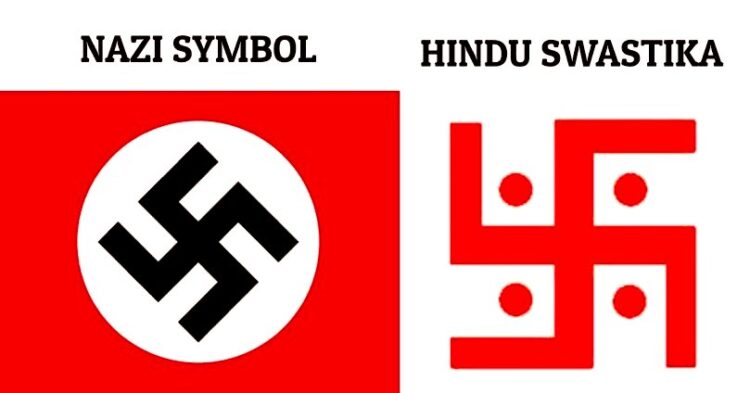Indian origin Canadian member of the Parliament, Chandra Arya told the Canadian PM Justin Trudeau and leader of the opposition Pierre Poilievre that Hindus feel restricted while using the Swastika sign or symbol as it is wrongly mistaken for Nazi Hakenkreuz.
The Plea
“I again call on Justin Trudeau and Pierre Poilievre and everyone not to call the Nazi Hakenkreuz as Swastika,” Chandra Arya said in a post on social media site X.
Arya, who represents the constituency of Nepean in the House of Commons of Canada reiterated his message from last year where he highlighted the issues faced by the Hindus living in Canada when the Hakenkreuz and swastika were compared.
“Please stop calling the Hakenkreuz (Nazi Symbol) of hatred as Swastika. We support the ban of Hakenkreuz or the hooked cross. But calling it Swastika is to deny us Hindu-Canadians our religious right and freedom to use our sacred symbol Swastika in daily life, “Arya told in his post addressed to Canadian speaker of the House of the Commons Greg Fergus.
On behalf of over one hundred million Canadian citizens of several religious faiths and in particular Hindu-Canadians and as a Hindu-Canadian myself, I call upon members of the House and all Canadians to distinguish between the Nazi Hakenkreuz, the hooked cross in German and English and Swastika, the sacred Hindu religious symbol, Arya said.
Arya’s plea last year was welcomed by Hindu groups in North America, who say that the Swastika that symbolises auspicious beginnings and good luck has been mistaken for the Hakenkreuz and has led to wrong and incorrect assumptions about Hinduism and its believers.
Fundamental Differences
The word Swastika is derived from the Sanskrit words Su (Good) and Asti (to prevail) and has been employed in the Rig Veda prayers and hymns which indicate well-being, prosperity, or good fortune. It is claimed to represent the four yugas (Satya Yuga, Treta Yuga, Dvapara Yuga and the Kaliyuga), four ends and objectives of life and four Vedas in the Vedic Philosophy. In some places it is also a girl’s name.
It is typically made of flowers or written in red, yellow, white, blue ink or paint As a result, it can be found in a variety of temples and religious ceremonies all across the world as well as the welcome signs in many South Asian households.
The Hakenkreuz, on the other hand is generally recognised as a symbol of anti-Semitism (hatred for Jews especially in Nazi Germany) or during the rule of Adolf Hitler and his Nazi regime in the Second World War. It was used as an emblem on numerous military hardware of the Wehrmacht such as fighter planes, tanks, medals etc.
Also Read: https://organiser.org/2023/11/05/132373/bharat/vilification-of-swastika-has-to-stop/

















Comments